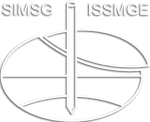Experimental investigation on index properties of polymerized clays
Experimental investigation on index properties of polymerized clays
Many engineering applications use geosynthetic clay liners (GCLs) containing sodium bentonite (NaB) as hydraulic barriers. GCLs possess low permeability and high self-healing capacity. The interaction of NaB-GCL with permeants containing highly concentrated solutes and cation valence may compromise these properties, making them unsuitable for barrier applications. Hence, several bentonite polymer composites (BPCs) have been actively explored to surmount this drawback. BPCs showed a very low permeability upon exposure to aggressive permeants compared to untreated NaB. However, their performance focusing on index properties under such exposure conditions has not been thoroughly explored due to the difference in polymer types and their confidential chemical formulations. Therefore, the present study aims to investigate the variation of Atterberg limits and swell index of a new type of polymerized bentonite (PB) with three different electrolyte solutions: NaCl, CaCl2, and AlCl3, each having a concentration range of 5 to 1000 mM. The results indicated that the swell index and liquid limit of NaB and PB (5% polymer dose) decreased with increased cation valence and pore fluid concentration. The comparison of NaB and PB results suggests that the properties are primarily affected by the pore fluid chemistry and its effect on clay microstructure and polymer conformation. Further, permeability tests of PB with different electrolyte solutions are in progress which helps in correlating the response of hydraulic behavior with their index properties.
K. S; Y. Singh; D. N. Arnepalli
9th International Congress on Environmental Geotechnics (ICEG2023)
Engineered Barriers
https://doi.org/10.53243/ICEG2023-192
